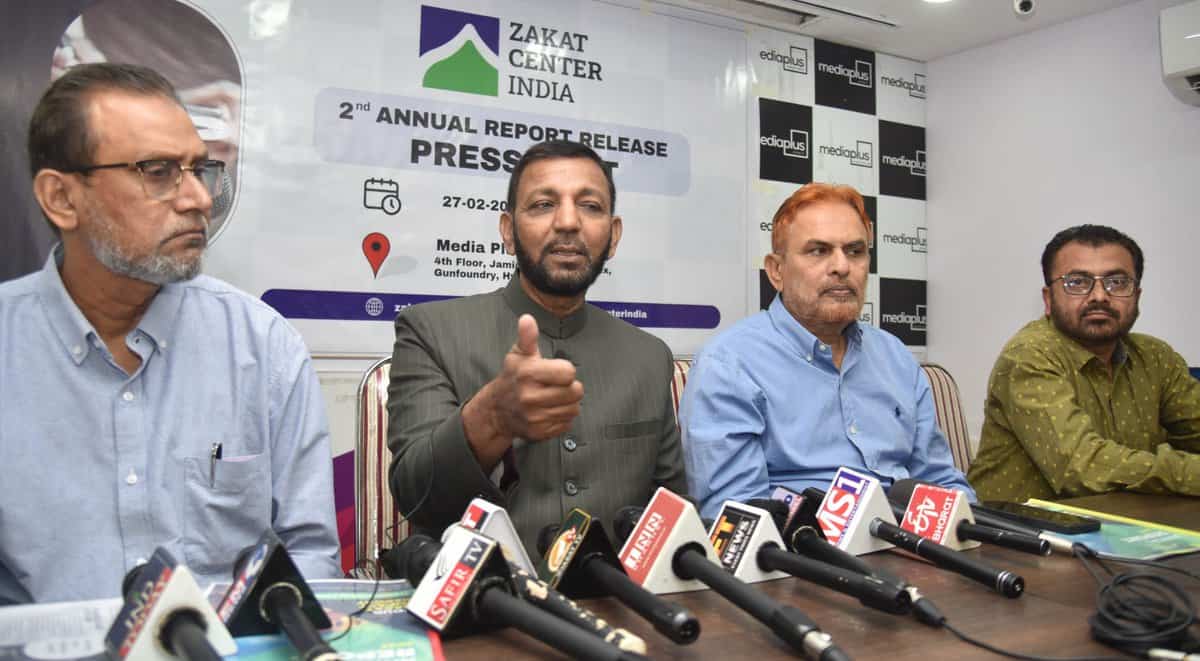
Hyderabad: Six months ago she was struggling to make both ends meet. Today she is not only self-sufficient but has employed two women to work for her.
How did this transformation come about in the life of Shaheen of Kishan Bagh in Hyderabad’s old city?
It’s all because of the power of zakat. The proper use of the annual poor due collected from affluent Muslims is bringing cheer and prosperity into many a household. A widow with four children to support, Shaheen had a tough time keeping the wolf away. Enter the Zakat Center of India (ZCI) and things started looking up for this poor woman. The Hyderabad chapter of ZCI provided her with a masala grinding machine worth Rs 20,000. And within no time Shaheen started making money so much so that today she has purchased two more machines and employed two women to look after her expanding business.
There are more such examples where the zakat money has done wonders. Take the case of a 21-year-old orphan boy at Golconda Fort. The ZCI provided him with two-wheeler repairing tools worth Rs 35,000 and today the young man is earning a decent living.
One of the five pillars of Islam, Zakat is a religious obligation in which the well-off members of the community are required to give at the rate of 2.5 percent of their total savings and wealth for the welfare of the poor and needy.
Ever since the ZCI started operating two years ago, a tale of resilience, community support, and the transformative power of Zakat has been seen. A glimmer of hope is shining in the lives of poor and destitute families weighed down by poverty and responsibilities. The once daunting task of financial instability is slowly fading away as the ZCI extends its lifeline.
Elsewhere in the country too it is touching lives and sowing seeds of empowerment by proper channeling of zakat funds. Many an indigent family is finding a footing and carving a path to sustainable livelihood.
“Zakat is the proven instrument for eradication of poverty,” said Abdul Jabbar Siddiqui, National Secretary, ZCI.
He told press persons on Tuesday that about 69 percent of the zakat money is being used to help people become self-reliant. From 633 in 2022 to 1516 now the number of beneficiaries has risen. A major portion of the zakat (69.4 percent) is being used for the livelihood sector followed by skill development and education (14.2%), ration distribution, and pension (8.4 %). A certain percentage of the zakat money is also being earmarked for feeding the hungry and for addressing emergency requirements. The ZCI has 20 branches in 11 states and it plans to raise the number to 400 in the coming years. “In Hyderabad alone we have helped 5000 families rise above the poverty line,” said Abdul Quddus, president, ZCI Hyderabad chapter.
Managed by a group of Islamic scholars and activists, the ZCI has a pan-India presence. Fully Sharia compliant, it uses cloud-based ERP technology for efficient operations. “We accept zakat contributions only through online transfers from Indian bank accounts and the beneficiary disbursement is done through the bank for transparency.” Mr. Siddiqui said.
